Erin Hills has an eventful past. What was once a farm was supposed to be a golf course designed by Tom Doak in the late 1990s. But that never happened and the property was acquired by Bob Lang, who wasn’t a golfer but became obsessed with hosting a US Open. He jettisoned Doak and hired Ron Whitten, Michael Hurdzan, and Dana Fry to design the golf course. While the original course was minimalist, with the architects moving little earth even to build greens, Lang became convinced that the course needed to be more difficult and needed more ‘stuff.’ He eventually built bunkers everywhere, ran out of money, and was bought out by some hedge fund guys from Milwaukee. This story is the subject of probably the best piece of golf journalism that I’ve ever read: the Milwaukee Journal Sentinel’s 7-part tale of the course’s troubled journey to the US Open.
But by the time the last acquisition happened, the course was already slated to host the 2017 US Open, so there was little chance that they were going to return the course to something closer to the original vision. And that’s a shame because what exists today is a golf course that sits on one of the most beautiful pieces of property that you’ll ever see, but one that’s just trying way too hard. It’s too long, the holes are too far apart, and there are too many bunkers that make it impossible to play anything but aerial shots most of the time. It’s a course that looks to have been built solely to challenge low handicap golfer but the ultimate irony there is that the pros beat this course up more than any other recent US Open site. They made the excuse that it had been wet and the course couldn’t get as firm as they wanted but it’s June in the midwest and the course is on farmland: it rains a lot on the ground is good at retaining water. That’s why they used it for farming in the first place.
If it’s not already clear, I had a lot of problems with Erin Hills. On about the eleventh hole, Bob asked me what I thought of the course and I went on one of my rants, which I summed up by saying ‘this course is a lot of what’s wrong with golf today.’ We played with a guy who insisted on playing the championship tees and while he was a long hitter and a good golfer, we spent almost every hole looking for his drives in the fescue. On most of those holes, it’s at least 250 just to reach the fairway so any little bit off line and your in the fescue. Still, we couldn’t have played any faster than the five hours that we took because the group in front of us was also always looking for their balls in the fescue.
Despite my comments, I think that Erin Hills gets off to a very good start. The first hole features the course’s only marshland up its left side, but hugging this will make the lay up much easier. If you hit a weak drive out to the right (as I did), you’ll have to contend with the bunker in the middle of the fairway on your lay up. Once you get past this, the approach to the slightly domed green is wide open. It's a tough opening hole, but a very good par 5.
But by the time the last acquisition happened, the course was already slated to host the 2017 US Open, so there was little chance that they were going to return the course to something closer to the original vision. And that’s a shame because what exists today is a golf course that sits on one of the most beautiful pieces of property that you’ll ever see, but one that’s just trying way too hard. It’s too long, the holes are too far apart, and there are too many bunkers that make it impossible to play anything but aerial shots most of the time. It’s a course that looks to have been built solely to challenge low handicap golfer but the ultimate irony there is that the pros beat this course up more than any other recent US Open site. They made the excuse that it had been wet and the course couldn’t get as firm as they wanted but it’s June in the midwest and the course is on farmland: it rains a lot on the ground is good at retaining water. That’s why they used it for farming in the first place.
If it’s not already clear, I had a lot of problems with Erin Hills. On about the eleventh hole, Bob asked me what I thought of the course and I went on one of my rants, which I summed up by saying ‘this course is a lot of what’s wrong with golf today.’ We played with a guy who insisted on playing the championship tees and while he was a long hitter and a good golfer, we spent almost every hole looking for his drives in the fescue. On most of those holes, it’s at least 250 just to reach the fairway so any little bit off line and your in the fescue. Still, we couldn’t have played any faster than the five hours that we took because the group in front of us was also always looking for their balls in the fescue.
Despite my comments, I think that Erin Hills gets off to a very good start. The first hole features the course’s only marshland up its left side, but hugging this will make the lay up much easier. If you hit a weak drive out to the right (as I did), you’ll have to contend with the bunker in the middle of the fairway on your lay up. Once you get past this, the approach to the slightly domed green is wide open. It's a tough opening hole, but a very good par 5.
The second hole is one of the best on the property. If you drive it toward the bunkers on the right, you’ll have an awkward angle to the green and likely a blind shot. But if you can carry part of the hill with your drive, you’ll have a clear look down the deepest aspect of another dome-shaped (and small) green. I thought that the green was a little bit gimmicky, like a Pinehurst no.2 green, but with more severe run-offs. But apparently, it was placed on a natural knole and used to be an even smaller and steeper dome. Sometimes the hand of man is an improvement, at least for the sake of golf.
The third starts my complaints about the course as we’ll see 7 or 8 holes like this: a long par 4 with a huge fairway to a green that’s wider than it is deep with a big bunker right in the front middle, preventing you from being able to run the ball on. I’m not sure why anyone thought that this would be the right way to challenge the longest hitters. It plays right to their strengths: bomb it 350 inaccurately and wedge it onto the green. Meanwhile the guy who hits it 250 (me) is stuck with a long iron that they have to try to fit around the bunkers.
Four is the same thing except this time if you go over the green, you run down a hill. Even though I only had a wedge to the green, I couldn’t stop it up there. Five is the same thing as well, except we’ve reverse directions and are now playing into the wind, so what was a wedge is now a 4-iron.
The sixth is the first of what’s actually a pretty good set of par 3s. It plays over a valley to a ridge top green with a big false front. Although you can’t tell from the tee, the green is quite deep and pretty flat. So it’s better to miss long than short and if it’s playing into the wind like it was for us, take plenty of extra club.
We reverse direction again for the par 5 seventh, which was playing quite short—even I was able to reach the green in two with a hybrid from 550. Same deal again, bunkers blocking access to the front of the green. I decided to hedge a bit right and that was the right call; short and right of the green is a fairly easy pitch.
Nothing about the long par 4 eighth is easy. While there are no bunkers off the tee, unless you carry it a long way (into the wind), you’re going to hit into the upslope and have a long, blind approach. Of all the holes at Erin Hills, this one might bother me the most. It falls beautifully across the land and has a good green site but what do they do? Block the entire entrance to the green with bunkers. I don’t get it. Why on a 440 yard par 4 where you drive into an upslope would you put bunkers across the entire front of the green? I swear, they designed this course with about 15 people in mind and one of those, Brooks Koepka tore it a new one in the US Open. This approach to design doesn’t even work for the people it’s designed for so really, it works for no one.
Nine is a short, downhill par 3 that I was a bit worried about. It has another dome-shaped green and is surrounded by bunkers, so I was worried that it was going to create a Kingsley-Club-2nd-hole situation where if you hit it in one, you go back-and-forth across the green until you eventually pick up. But this hole actually works because the green is large enough, the slopes aren’t that steep, and the bunkers aren’t that deep. The ball will hold on most edges of this green. Maybe I’m underestimating the possibility of disaster because everyone in my group hit a decent tee shot, but even that’s some evidence that it’s playable—because it was windy.
I had a hell of a time with the tenth—I couldn’t even reach the fairway. But unlike all of the long par 4s on the front, this green is open in front and fairly receptive. Eleven is also restrained for this course—only about 350 yards from the normal back tees (7,150 yards) and without fairway bunkers. A drive up the left side gives you a better angle at right pins but if you drive it up the right, you’ll be playing into the slope of the green. This hole is as easy as it gets at Erin Hills.
And twelve is as good as it gets—a beautiful natural hole winding through several of the hills in the links-like middle of the property. The drive is onto a ridge and if you hit a good one, you’ll go over the other side and have a wedge to the green (and also maybe drive into the group in front of you like the one behind us did). The approach is over another ridge to a green that angles front-right to back-left. This isn’t a very interesting hole from a strategic perspective because there’s no way to open up the angle of the green, but it’s a hole that was routed over interesting land in an interesting way and doesn’t try to outcompete it with a bunch of bunkers. For me, that’s enough to make it an excellent hole.
The thirteenth isn’t a very interesting par 3 but I appreciate its visual simplicity—something that does not characterize the par 5 fourteenth. We’re back to the bunker overload here with blindness, alternate fairways, and confusing turns in the fairway to boot. Like many of the holes at Erin Hills, the key thing to do is…play the correct set of tees. I was playing off the middle green tees (still 6,750 yards) and was able carry the fairway bunkers on the left off a good drive. If you can go for the green in two, play over the middle of the rough-covered mound as everything near the green feeds right. The alternate fairway short and right of the green doesn’t serve much purpose.
Fifteen is one of three shorter par 4s (with two and eleven) and this is the one that they made drivable for the US Open. It’s not well-suited for that. The green is perched up on the side of a big hill and there are bunkers everywhere. The only sensible play here is to lay up, preferably just short of the left centerline bunker. You’re pretty much dead if you miss this green (as I learned from both of my playing partners) so wherever you drive it, go for the center of the green. You may three-putt if the pin is near an edge (as I learned from myself) but you won’t make a 7, which is otherwise quite possible.
The sixteenth is a lovely medium-length par 3. While the green is surrounded by bunkers, there’s enough room up there that you should be able to hit it with a decent shot. Seventeen is something that I wish more holes were: bunkerless. The hole doglegs slightly left around the hole and the fairway slopes gently to the right, making it a tough drive. But you want to drive it up the right side here because a ridge blocks the green from the left side of the fairway and the ground short of the green slopes gently to the right.
The final hole sums up Erin Hills nicely: there’s just too much shit going on. There are bunkers on both sides of the fairway seemingly for the entire hole then when you get to the lay up area, there’s a bunker in the middle of the fairway too. It looked like a nightmare on my GPS. And it’s very frustrating even if you hit a good drive because the second is blind and there are bunkers everywhere. I hit what I thought was a decent second only for my ball to roll into bunkers on the left side of the fairway. I played conservatively from there and was able to save a six, but it was an annoying way to finish.
Despite all of my griping, I actually played really well at Erin Hills. In fact, one of my proudest moments ever in golf was at the end of the round when the caddy for my championship-tee-playing playing partner said that it was the first time he had seen anyone play the championship tees and then asked me what I shot. 74, I was very proud to say. Because I had played the appropriate set of tees, I was able to take advantage of some of the easier holes and hit some good shots into the harder ones. I also got a few lucky bounces.
But I played one of my better rounds ever and had good luck—I’m not a very long hitter (usually ~250 off the tee) and I don’t hit the ball that high. And if I played 10 more rounds here, that’d probably be the best score that I’d shoot by a few. This course demands a very modern, aerial game. It’s the type of design that you could do on any type of land, which is why it bothers me so much here—the land is so good and it really deserved a design that used the undulating character of the property to generate most of the strategy. But this design doesn’t generate strategy so much as it generates difficulty and it does that almost entirely through the use of bunkers. It would have been possible to build a great course on this land with no bunkers.
I’m not surprised that the pros beat this course up in the US Open. The fairways aren’t that narrow, so it just becomes a matter of bombing it off the tee and landing high, soft iron shots into greens. Go figure that the guy who benches 350 lbs. won the tournament. The next time that they play a big men’s tournament here, either Bryson DeChambeau or one of his disciples will shoot 20-under and win. In the meantime, thousands of golfers will play the course from too far back (’tip it out’ as my playing partner douche-ily put it), spend half their day in the rough, shoot 120, and cause the pace of play to be even slower than that on the PGA Tour.
But I played one of my better rounds ever and had good luck—I’m not a very long hitter (usually ~250 off the tee) and I don’t hit the ball that high. And if I played 10 more rounds here, that’d probably be the best score that I’d shoot by a few. This course demands a very modern, aerial game. It’s the type of design that you could do on any type of land, which is why it bothers me so much here—the land is so good and it really deserved a design that used the undulating character of the property to generate most of the strategy. But this design doesn’t generate strategy so much as it generates difficulty and it does that almost entirely through the use of bunkers. It would have been possible to build a great course on this land with no bunkers.
I’m not surprised that the pros beat this course up in the US Open. The fairways aren’t that narrow, so it just becomes a matter of bombing it off the tee and landing high, soft iron shots into greens. Go figure that the guy who benches 350 lbs. won the tournament. The next time that they play a big men’s tournament here, either Bryson DeChambeau or one of his disciples will shoot 20-under and win. In the meantime, thousands of golfers will play the course from too far back (’tip it out’ as my playing partner douche-ily put it), spend half their day in the rough, shoot 120, and cause the pace of play to be even slower than that on the PGA Tour.
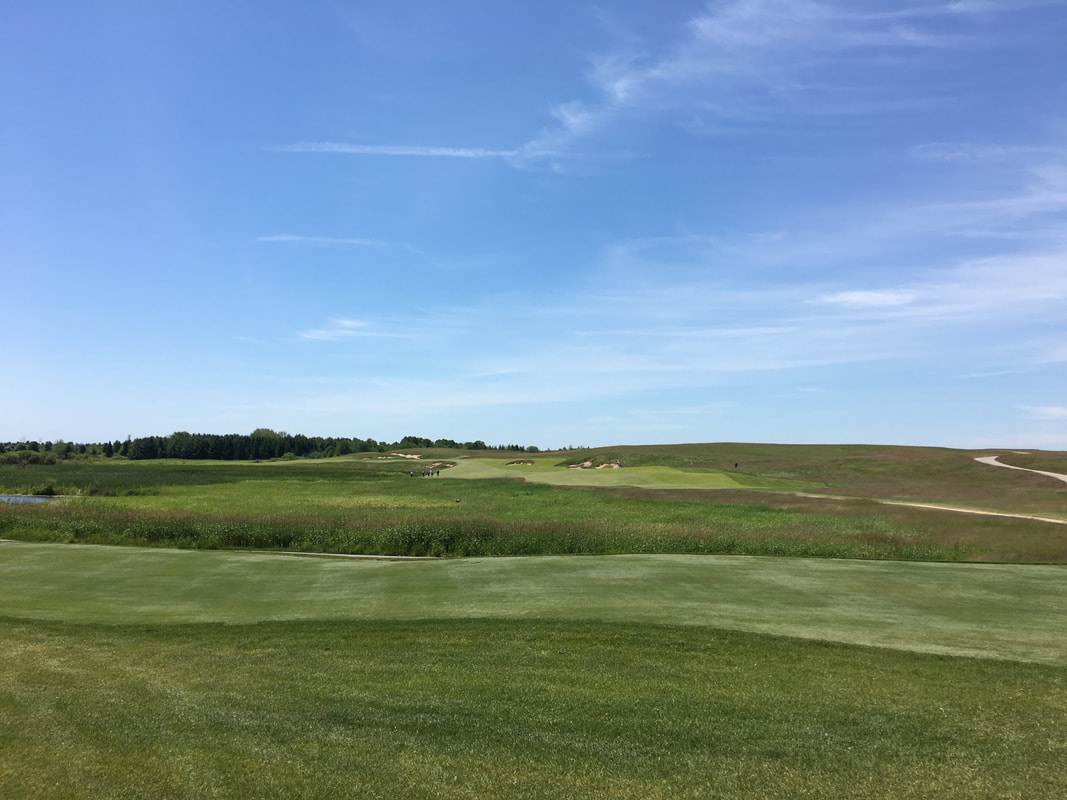
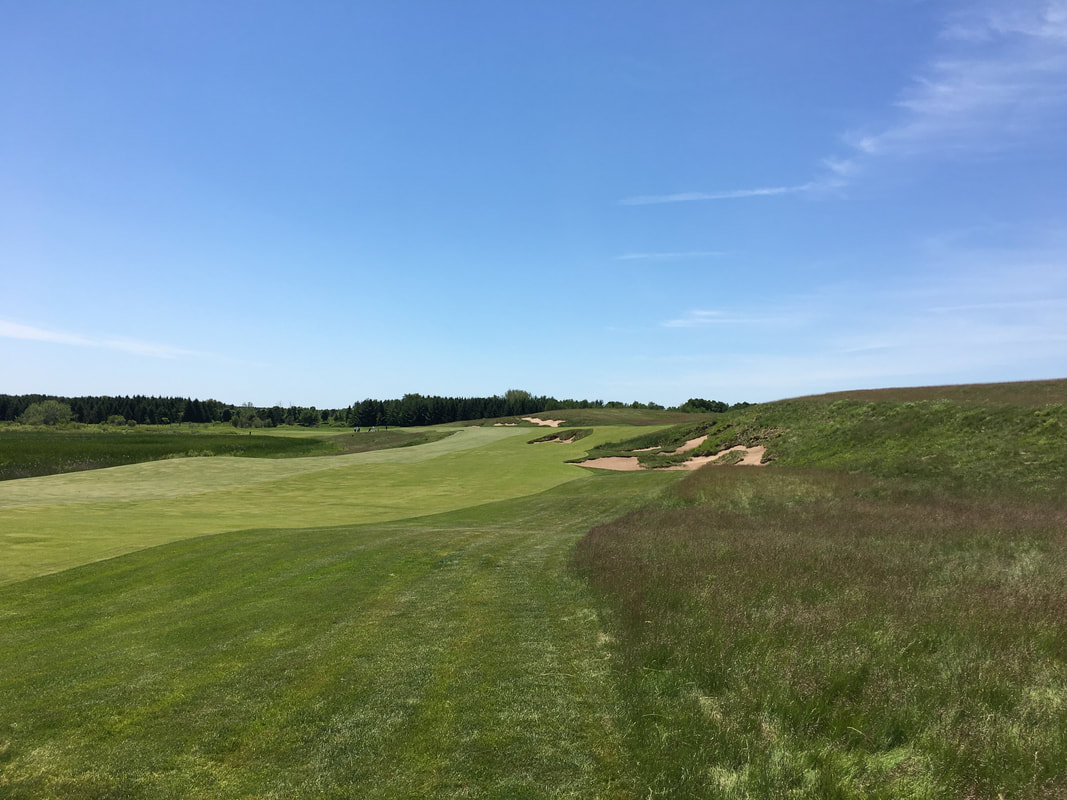
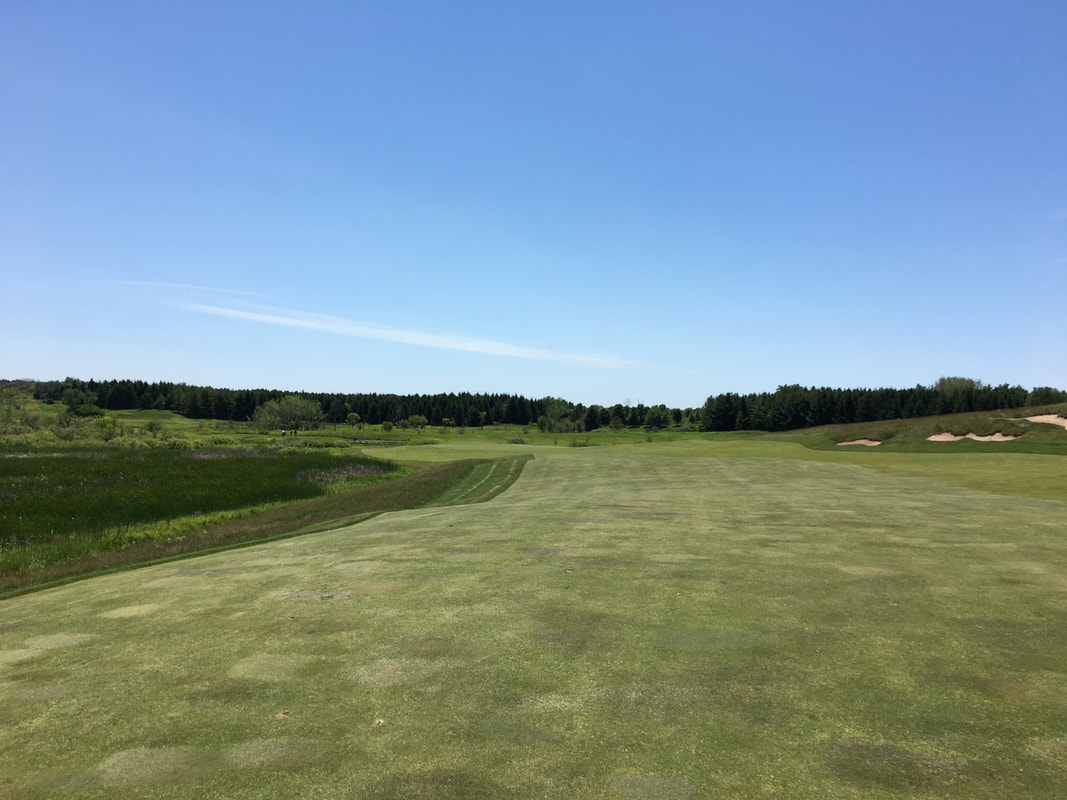

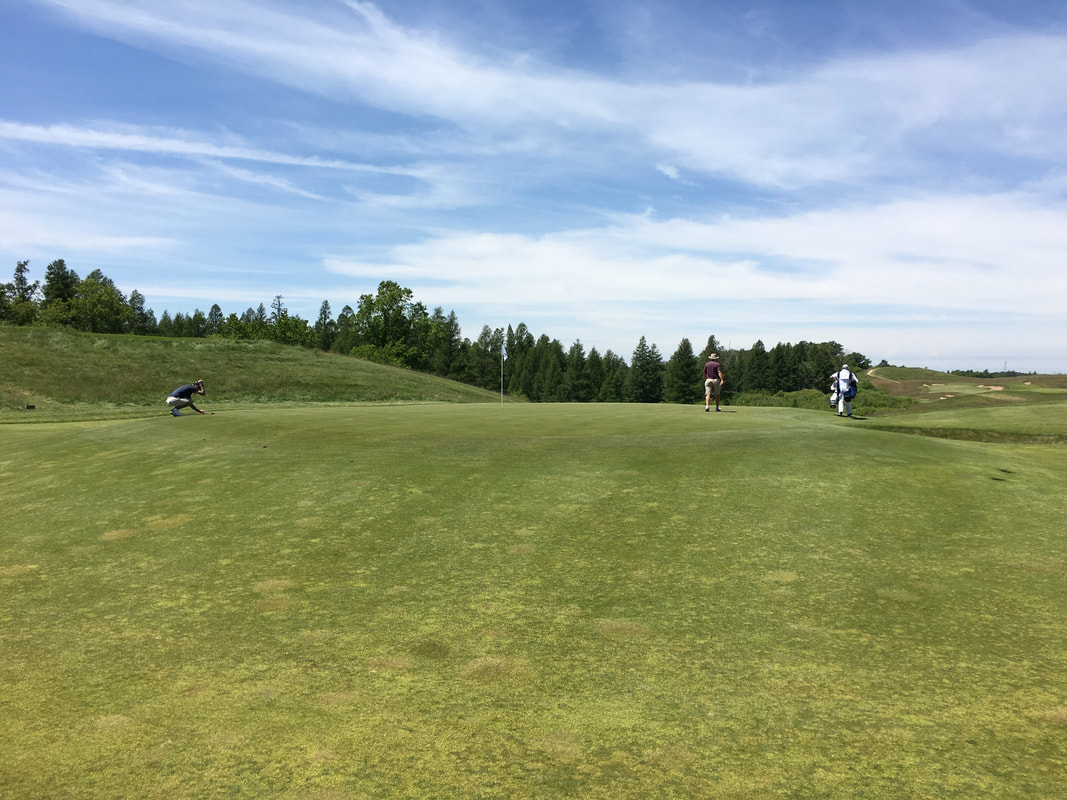













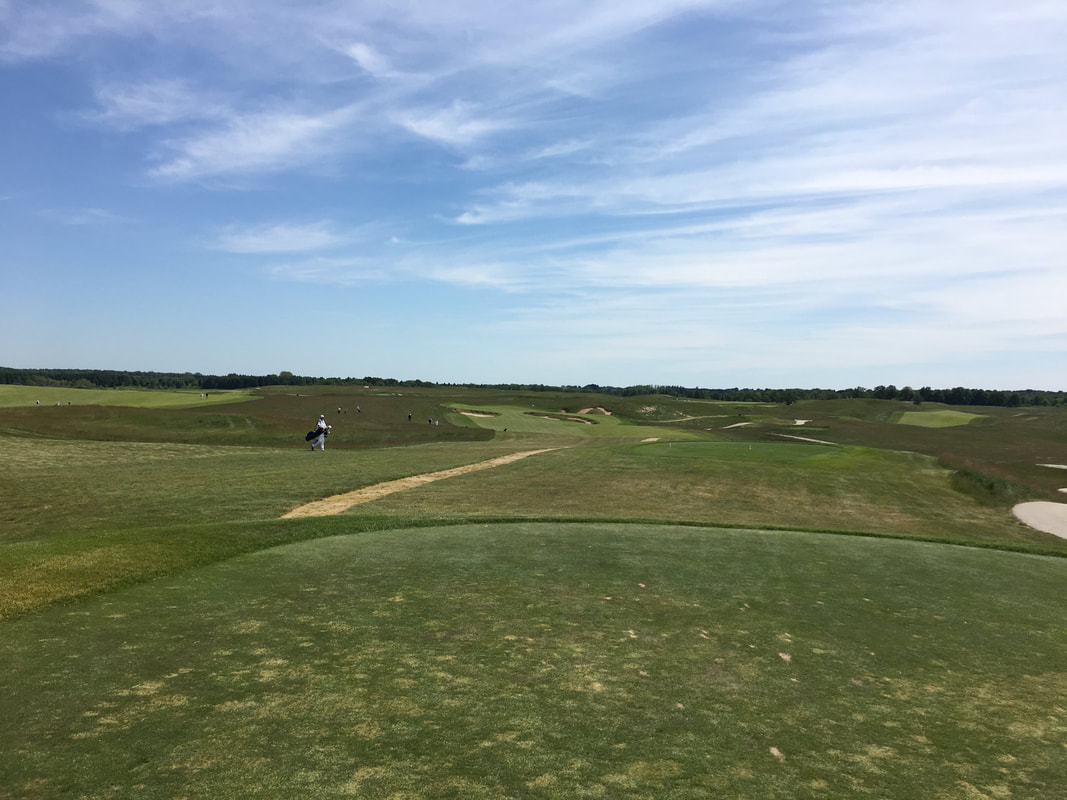
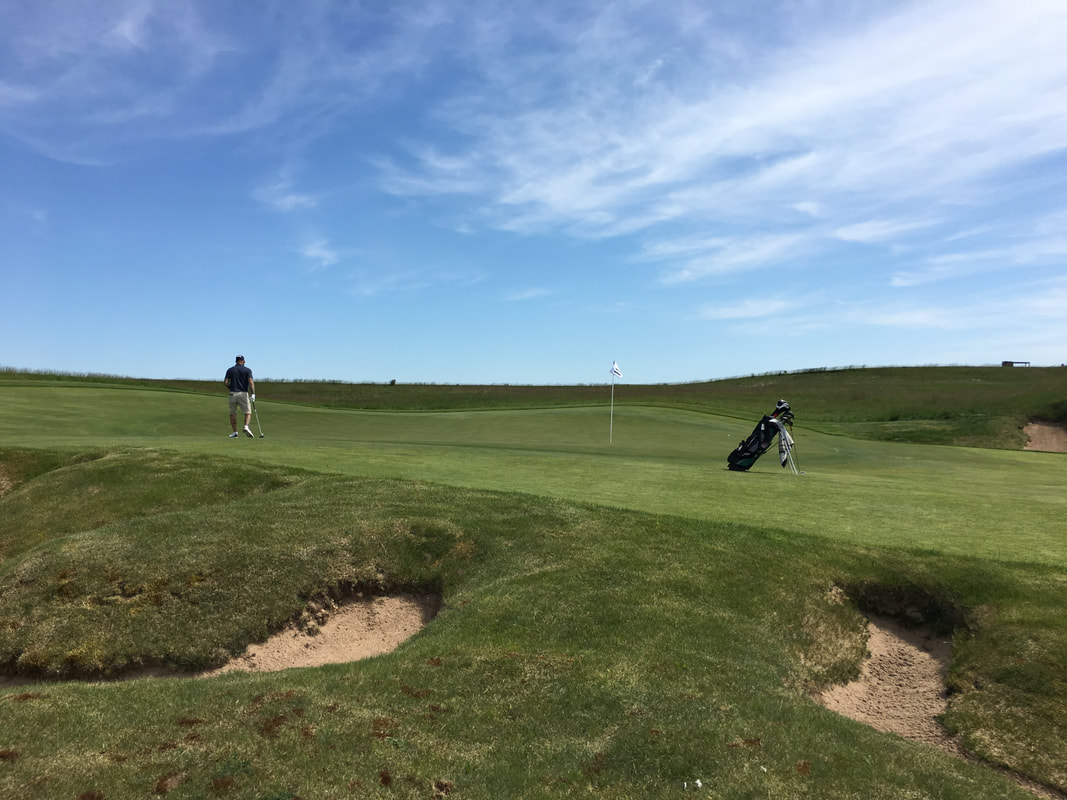


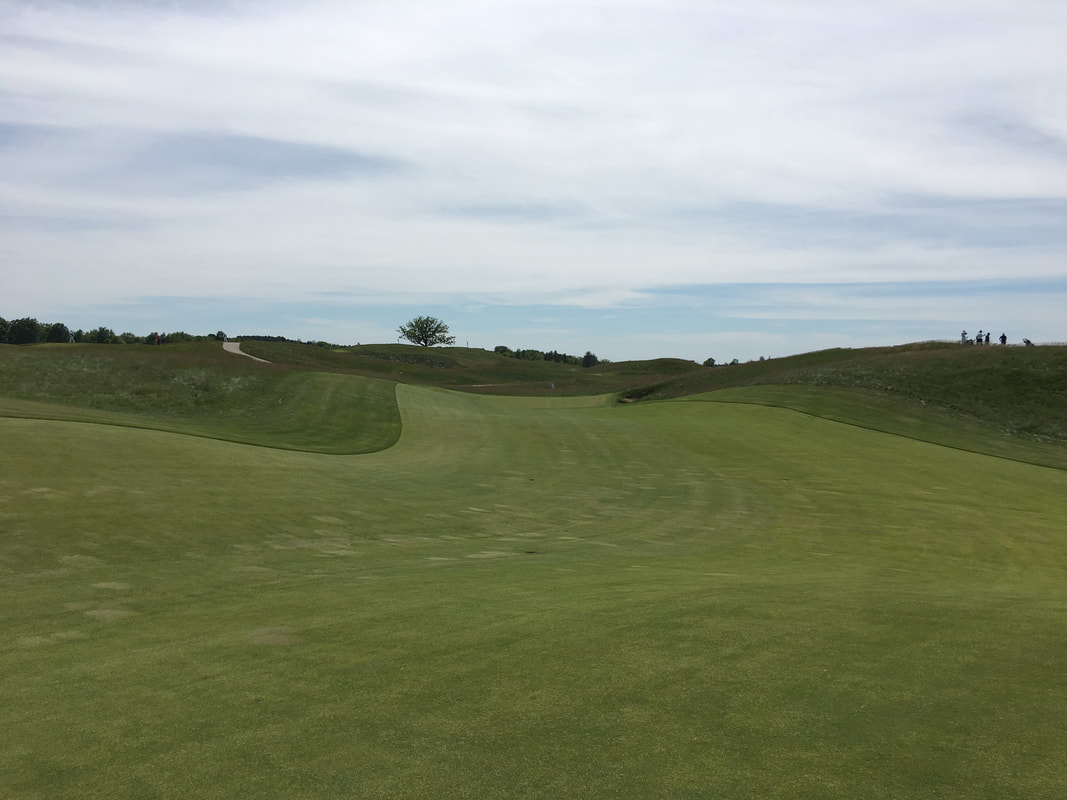





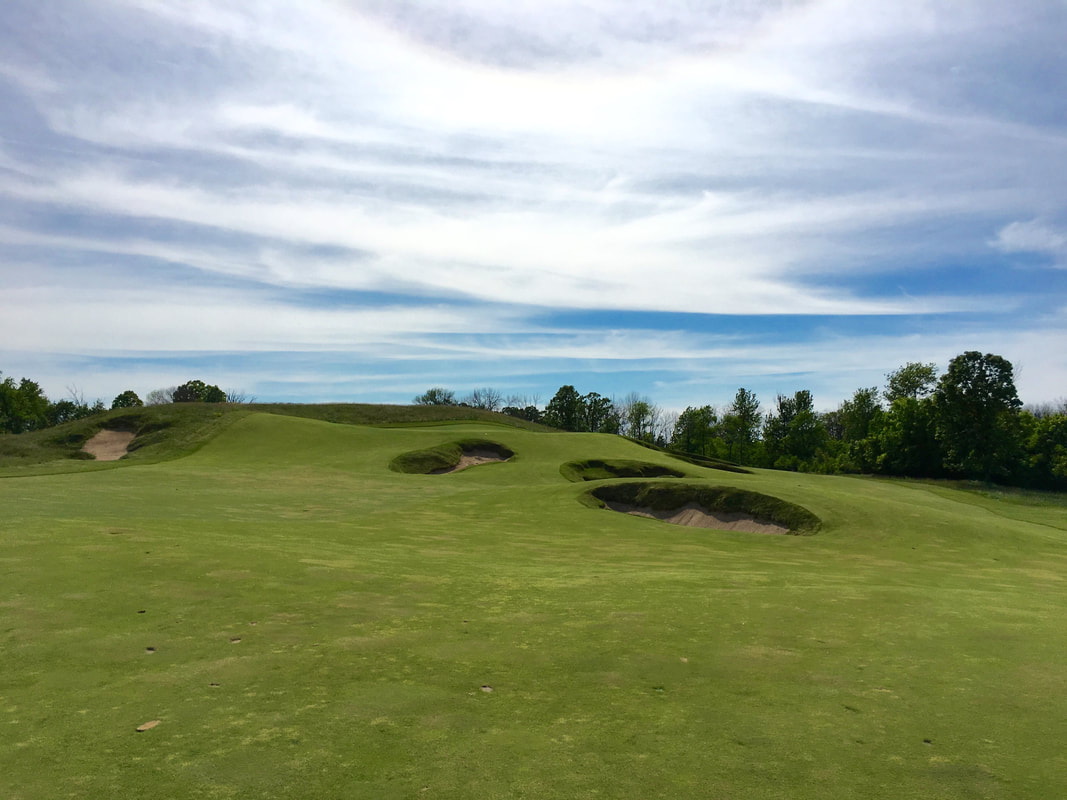






 RSS Feed
RSS Feed